Traditional Korean architecture influenced the layout and shelving design in the library at the Korean Cultural Center New York, designed by Studio Empathy and Praxes.
Changhaak Choi of Studio Empathy and Jiyoung Kim from Praxes worked together to complete the 1,600-square-foot (149-square-metre) library, located on the third floor of the Korean Cultural Center New York’s new venue in Midtown Manhattan.
The space houses a collection of over 10,000 books, periodicals, government publications, and multimedia resources in both Korean and English.
It acts as a resource for research on Korea, introduces Korean writers to the New York audience, and provides educational materials for young Korean-Americans and those interested in Korean culture.
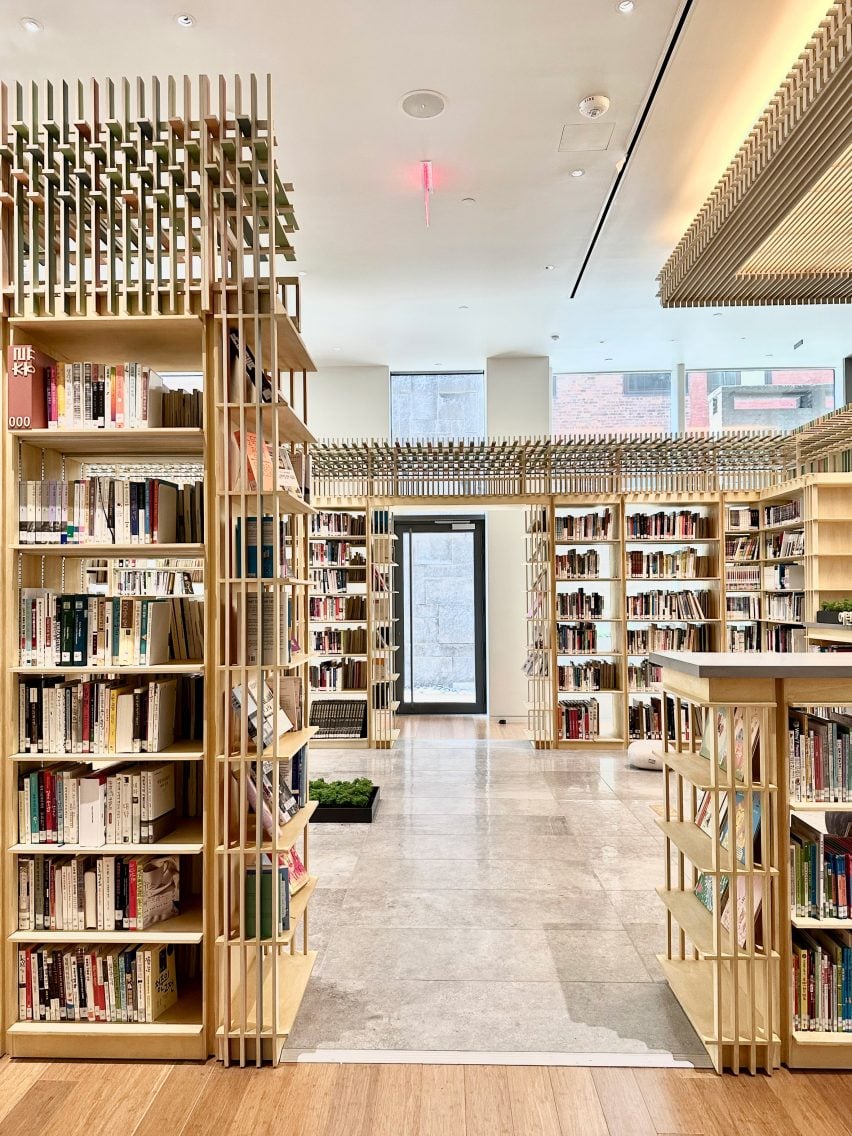
“This new library aspires to be a cultural hub, promoting information exchange and enhancing mutual understanding of Korea among the Korean-American community and the broader New York population,” said Choi.
“The design seamlessly blends archaic forms with a minimalistic and contemporary aesthetic, which incites a biophilic space.”
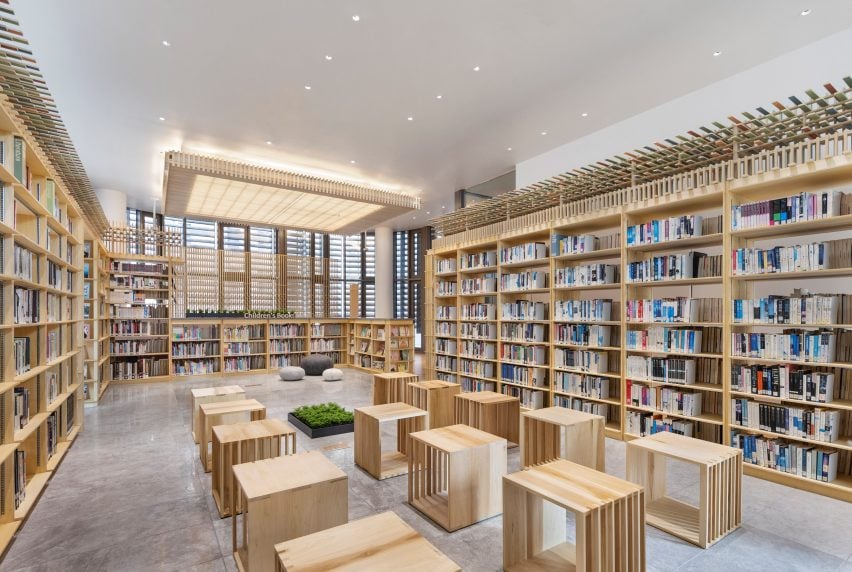
To enable easy circulation, the bookshelves were arranged in a rectangular plan with a pathway around the perimeter and a courtyard in the centre, with openings to allow movement between the two.
The layout is akin to a traditional Korean han-ok house, which is similarly organised in a loop around a central space.
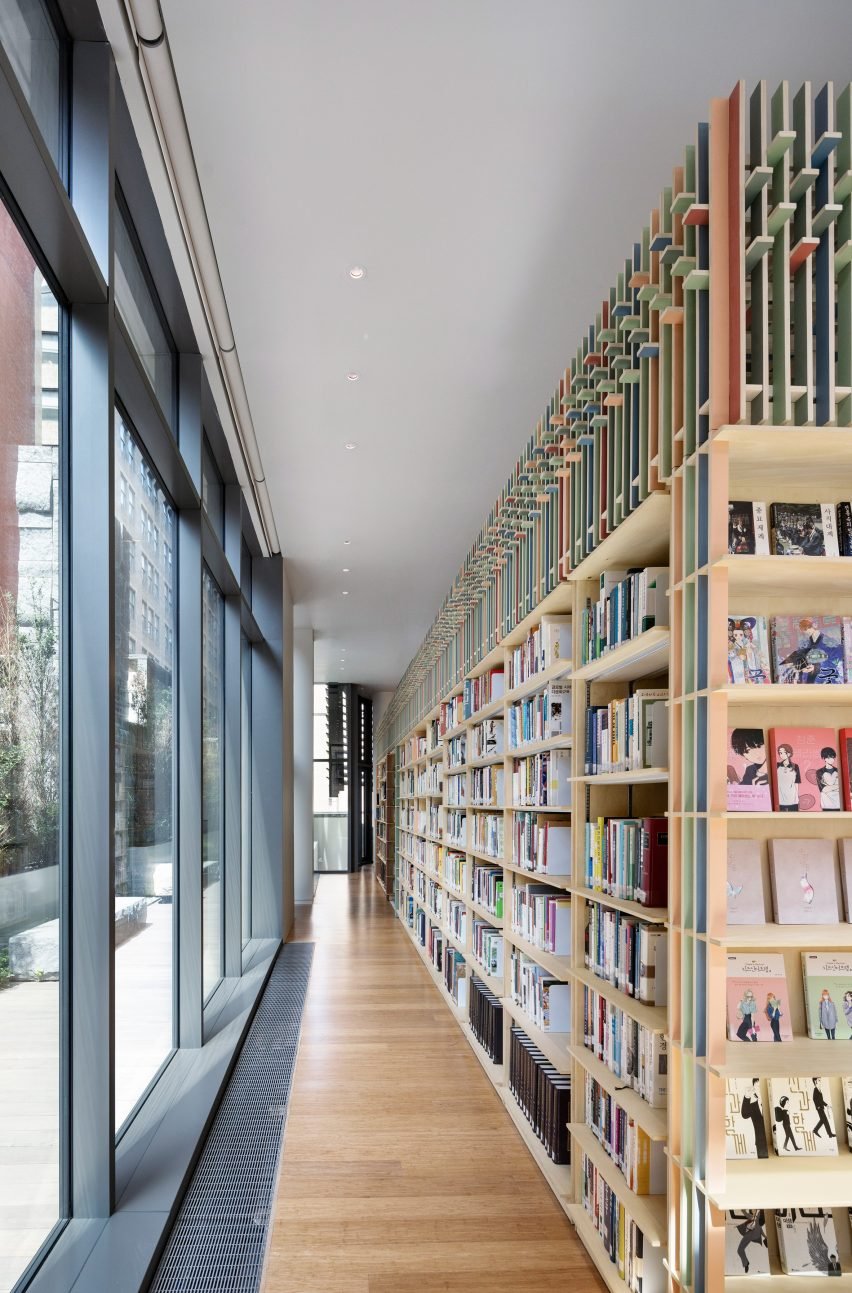
Here, the “courtyard” serves as the reading area and includes cube-shaped wooden stools upon which visitors can sit.
“This design enables visitors to continuously explore the diverse scenery of book stacks and enjoy views of the rooftop garden through glass walls, seamlessly integrating indoor and outdoor elements,” Choi said.
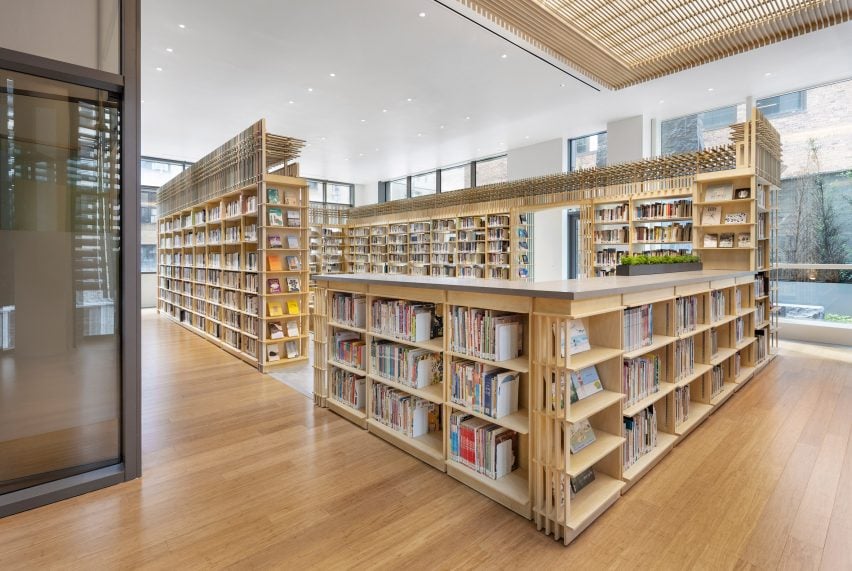
The bookshelves were also modelled on the typical post-and-lintel assembly and joining techniques found in han-ok homes.
They were fabricated as modular units using thin plywood panels, slats and metal components to be efficient and cost-effective.
Along the tops and sides of the storage modules, a wooden lattice is coloured in five bold hues to enliven the design.
“This design resonates with the vibrant book spines, creating a dynamic visual contrast with the monochromatic, bright wood shelves, and light grey stone floor,” said Choi.
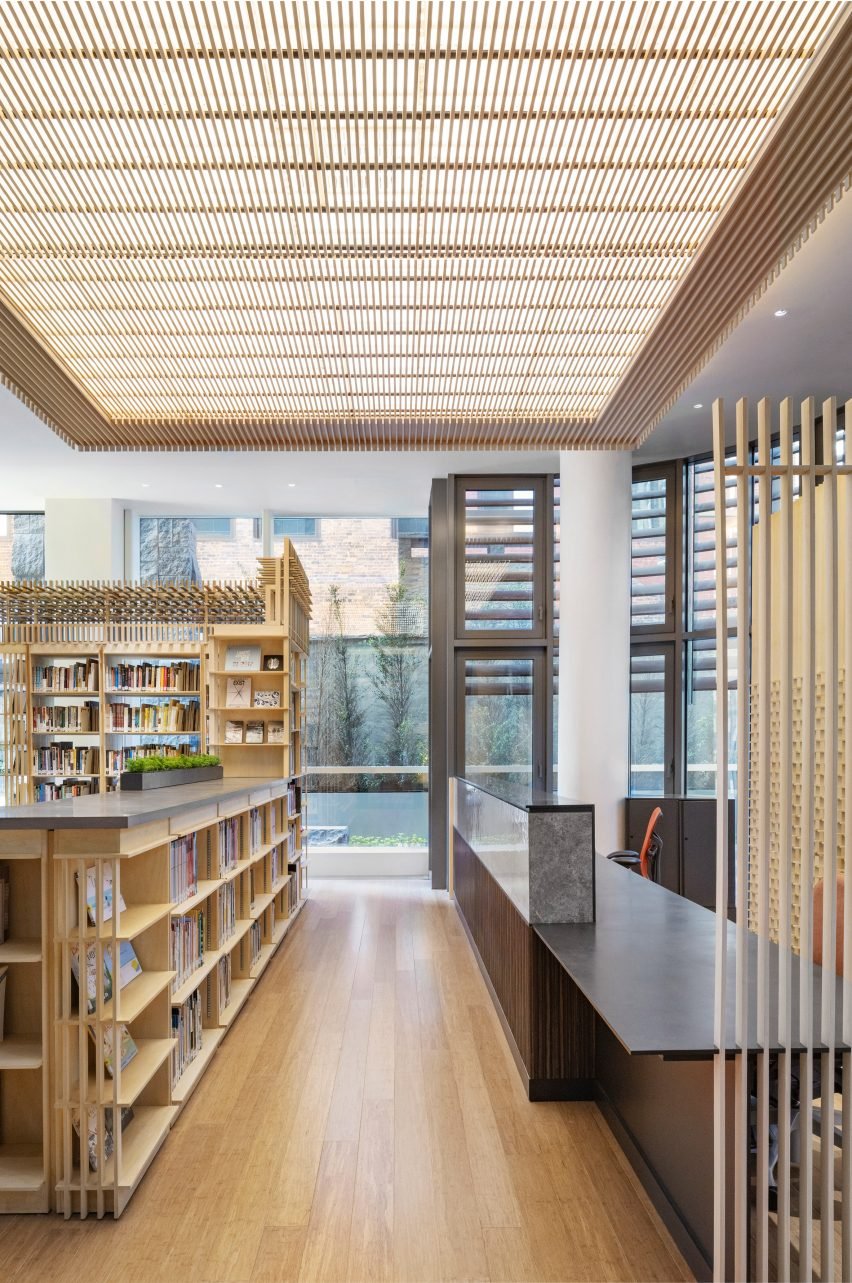
The aim is for the library to become a community hub for Korean-Americans and others New Yorkers, and host events like book launches and other group activities.
“This project showcases how cultural heritage can be preserved and celebrated through thoughtful and contemporary design, creating a unique and enriching environment for all visitors,” said Choi.
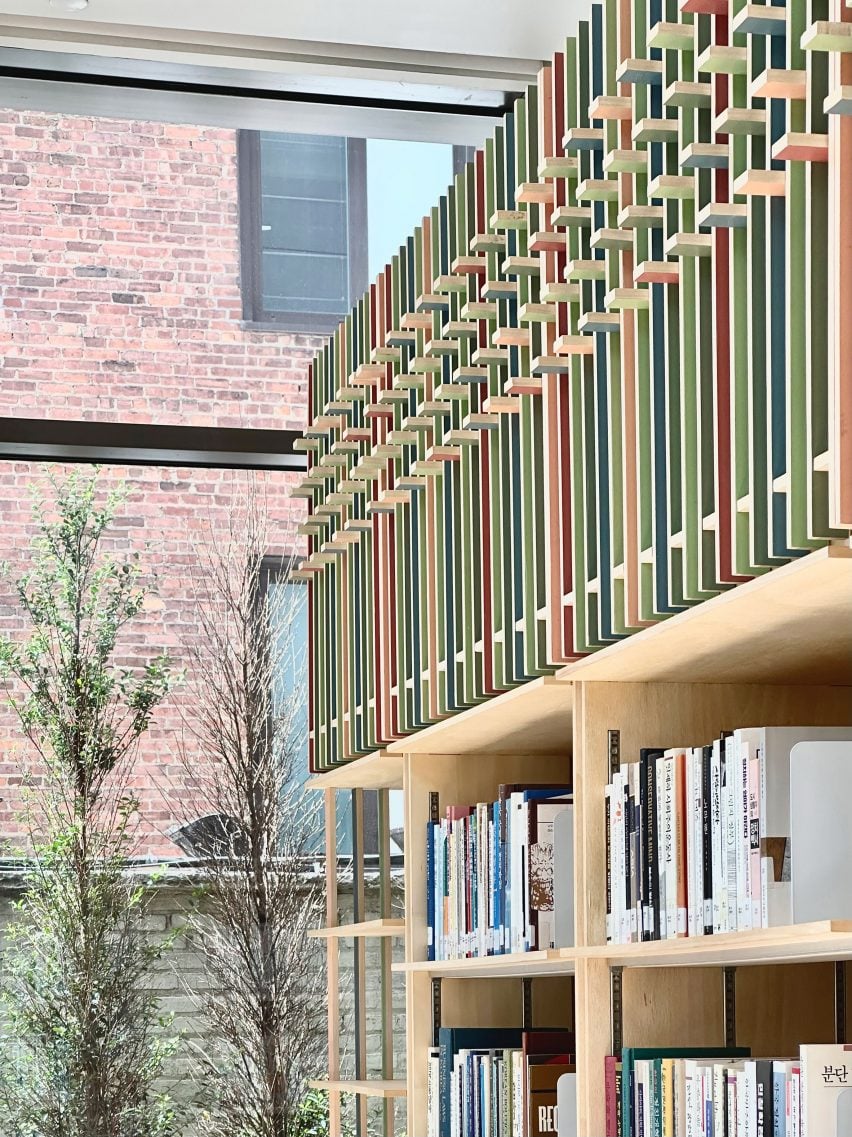
Playful shelving solutions have become a hallmark of contemporary library designs around the world.
At a space in São Paulo, MAB3 and Zénite created forest of books where shelves encircle tree-like columns, while Studio Hinge took an arboreally informed approach to storage at a library in Mumbai.
The photography is by Michael Moran and Changhaak Choi.
